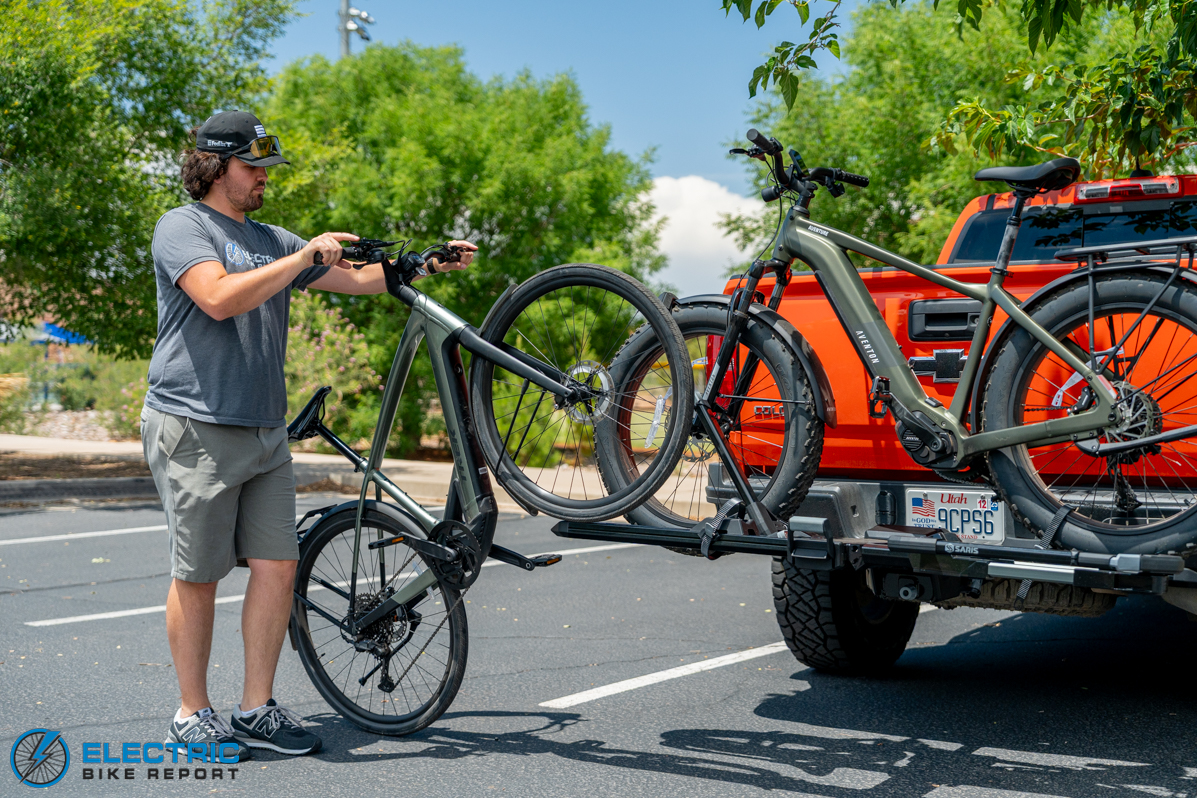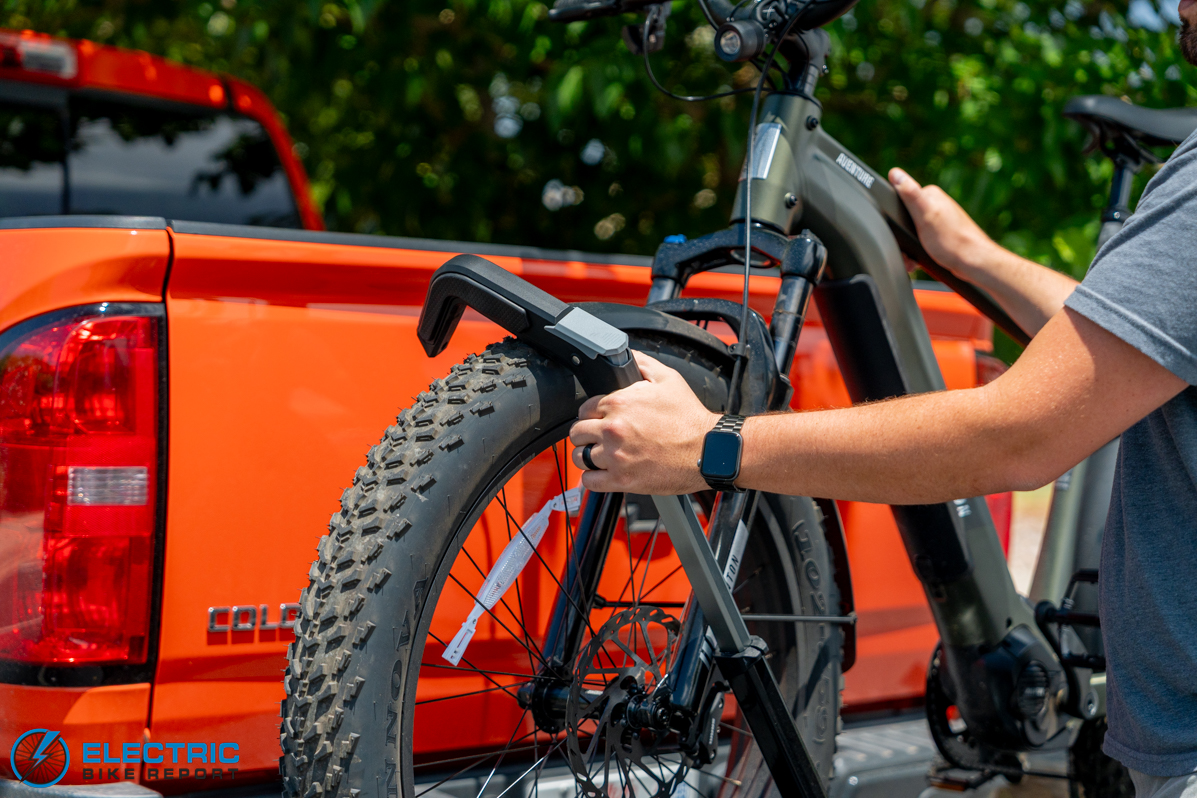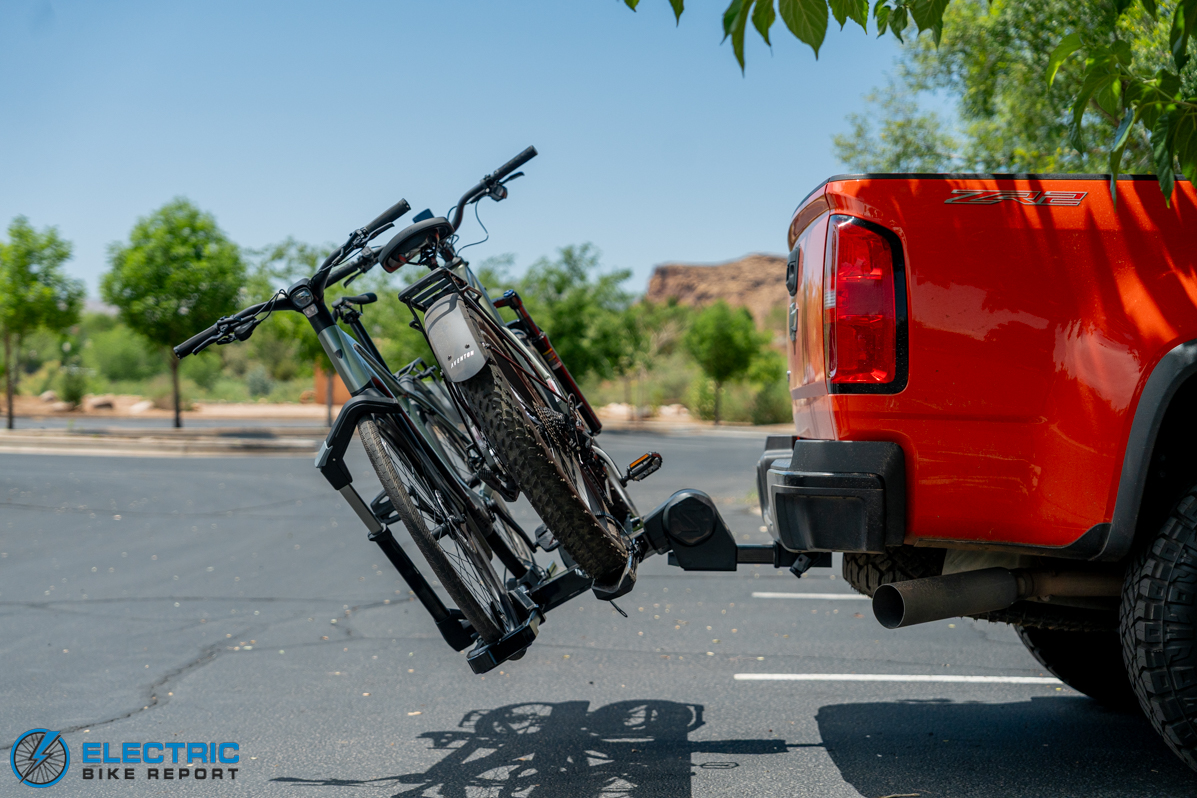Securing the rack to the hitch
The simple but effective locking hitch pin keeps the rack in place, and the hitch expander helps it fit snuggly into the receiver.
Attaching the Saris Edge to your vehicle’s hitch is a straightforward process—and assembly is simple too. Just insert the spine of the rack into the hitch receiver, slide the locking hitch pin through, secure it with the lock, and tighten everything down using the integrated knob. Once it’s cinched, the rack won’t budge—but it’s a good idea to check the knob’s tightness occasionally.
As for the initial setup, the rack comes with four lettered arms (e.g., A to A slot), which are secured using four bolts and the included hex wrench. If you’re assembling it solo (like I did), it should take less than 30 minutes. With a second set of hands, you could cut that time nearly in half.
The rack is hefty once assembled, weighing over 65 pounds. It’s most easily mounted with two people, but it’s still manageable on your own if needed.
Loading bikes

Spacing between bikes is pretty generous, so it’s easy to load bikes up and roll into position along the tray.
The Saris Edge rack uses a V-shaped groove in the metal tray, which helps a lot when you’re loading heavy e-bikes. If you’re not going full He-Man and just lifting the whole thing in one go (“I have the power!”), The easier method is to roll the front wheel up onto the back section of the tray and then push the bike forward until you lift the rear wheel into place. The groove acts as a guide, keeping your bike steady as you load it into the first wheel bay.
For loading the second bike, it’s the same process just faced a different way, and with nearly a foot of clearance between the bikes you should easily avoid knocking pedals while doing it, just mind the handlebars and saddle contact as you load the second one.
The Edge will fit fat tire e-bikes up to 5” wide, and most any adult sized tire without a problem. And of course with 80 lbs weight capacity per tray, you can haul the majority of e-bikes, or if you have a removable battery, you can drop that out to try and make weight.
Securing the bikes

The spring-loaded arm has a fixed position to get the right angle each time. Just give it a little push down to grab securely.
Once the front wheel drops into the bay, press the release button to extend the spring-loaded hook arm. Bring it to its maximum height—that’s the correct angle—and let it drop into place. The spring tension is nice, though giving it an extra push down is advisable.
From there, align the rear wheel in the chock and pull down the security strap. There’s even a spot to hook the excess strap, which is a nice touch when you’re not carrying bikes—no dangling straps to worry about.
The chock itself has a flat top that slightly elevates the rear wheel 2.5”. This helps provide extra clearance when loading two bikes, especially if you’re dealing with overlapping handlebars or saddles. The Edge doesn’t use a tiered tray system, so that extra inch or two might be the difference between everything fitting or knocking into each other.
I’m a fan of the hook arm design—it removes the guesswork compared to other racks where you have to eyeball the angle (10 o’clock or 11?). It lands where it needs to be, and it shouldn’t interfere with suspension forks either.
You should also be able to load bikes with fenders, as long as they’re not full-coverage ones. And thanks to the spring-loaded design, if your front tire slowly loses air, the hook arm will naturally cinch down tighter as pressure drops—helping keep everything snug.
The rack also comes with built-in security. A cable lock is integrated into the Edge’s trays, so you can easily snake that across both frames for theft deterrence, and it’s nice that they’re keyed alike with the hitch pin. The lock isn’t super long, so no weaving it through your wheels if your the ultra-cautious type when parking over night, but it’s still solid theft deterrence anyway.
Trunk / Tailgate access

The downward tilting option will help with hatch back clearance, but you’ll wnat the Swing Arm adapter for full tailgate access.
The Edge has four key positions: upright against the vehicle, slightly tilted away, extended (for loading bikes), and tilted down for trunk or tailgate access with bikes loaded.
I like that the grab handle is positioned on the outside of the rack. It allows for one-handed operation when the rack is unloaded, though you’ll probably want two hands to lift it back up—especially with bikes on it.
The rack sits relatively far from the vehicle, which helps a lot. The first tilted-away position was enough to open the hatch on my Tesla Model Y, and the fully lowered position worked too—even with bikes loaded. Whether it works for a full tailgate depends on your vehicle and how low your hitch sits.
If you want maximum rear access, the Edge is compatible with Saris’s Swing Away Adapter, which lets the rack pivot a full 90 degrees for completely unobstructed access.

